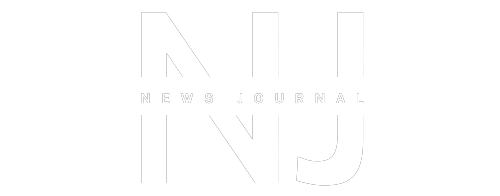Pending further consideration, the Court directs respondents 5 to 9 (media organisations) to ensure that all the broadcasts that are carried in respect to (the case) are in tune with any official press releases that may be issued either by the CBI or ED and comply with the directives which govern
After a petition protested to suspected news leaks, the Delhi High Court on Monday instructed several media outlets to ensure that their broadcasts on the Delhi excise policy scam cases are “in tune with official press releases” by the CBI and the ED and follow guidelines.
The Court also criticised the News Broadcasting & Digital Standards Authority (NBDA), which claimed that it lacked the authority to impose restrictions on news channels. Justice Yashwant Varma asked, “Why shouldn’t we disband you if self-regulation is just eyewash?”
Businessman Vijay Nair petitioned for the order, which added the News Broadcasters & Digital Association (NBDA) as a party to the proceedings. Nair is a suspect in cases involving the alleged excise policy scam that the Central Bureau of Investigation (CBI) and the Enforcement Directorate are looking into (ED).
Nair filed a motion with the Court earlier this month, alleging that the investigating agencies were disclosing sensitive material about the case to the media, negatively affecting his right as an accused.
On Monday, Justice Varma notified the media outlets mentioned in the petition while noting that the content in question was not based on any press releases allegedly released by the investigating agencies.
To determine whether the broadcast complied with the relevant rules, the judge instructed the news broadcasting authority to review it properly.
“Pending further consideration, the Court directs respondents 5 to 9 (media organisations) to ensure that all the broadcasts that are carried in respect to (the case) are in tune with any official press releases that may be issued either by the CBI or ED and comply with the directives which govern,” according to the Court.
The document continued, “In the interim, the Court directs respondent no. 4 (NBDA) to examine the broadcast in question properly and submit a report in these proceedings as to whether they would comply with the guidelines regarding broadcasting.”
In February, the Court scheduled the case for further deliberation.
It also mentioned that the trial court had issued a few “safeguards” that were adequate to “protect the interests of the parties” in the interim.
Several of the top news and current affairs broadcasters are members of the News Broadcasters & Digital Association (NBDA). NBDA administers the standards created voluntarily by NBDA for its members.
Nair is a former CEO of an events management company and the AAP’s head of communication. He is currently being held in connection with a money laundering investigation conducted by the ED about an alleged excise scam.
He was granted bail by the trial court earlier this month in the CBI case under investigation.
During the proceedings, the ED informed the Court that it had not released any press releases regarding the case and that none of the broadcasts in question was based on any information it had provided to the media.
The Court noted that a comparison with the aired content indicated “simply no correlation” between the two. The CBI produced the press releases issued by it in connection with the case.
The Court noted that a comparison with the aired content indicated “simply no correlation” between the two. The CBI produced the press releases issued by it about the case.
The counsel for NBDA informed the Court that it lacks the authority to impose restrictions on the news channels. At the same time, the Court questioned the source of information presented by the media in the absence of any official announcements and what actions the broadcasting authority intended to take against the broadcasters.
“Should we disband you? If self-regulation is a mere eyewash, why should we not disband you?.. Where does this TV channel get this information? You are either a self-regulatory body, or you are not a self-regulatory body,” The Court gave a reply.
“What these news channels publish has to necessarily be in tune with the disclosures publically made by the CBI, ED; it has to be something that appears or is reflected from the court’s order,” said the Court.
Nair has argued before the High Court that the case is in a crucial stage and that his rights as an accused person are negatively impacted when the specifics are made public.
He argued that all information reached the media via investigative agencies and that it was dangerous for news organisations to publish stories based solely on “imagination.”
The Court had then stated that it would take into account the official communications made by the investigating agencies and determine whether the television network’s coverage of the matter was based on the communication or a “figment of their imagination.”
According to the prosecution, Nair, a member of the AAP, the party in power in Delhi, engaged in a criminal conspiracy with others. The conspiracy’s goals were furthered by creating and implementing the GNCTD’s 2021–2022 excise policy.
The prosecution claims that the goal of the strategy was to give unauthorised and illegal favours to liquor producers and distributors at the expense of public coffers, and it caused the government to lose a significant amount of money as a result.
Under pertinent sections of the Indian Penal Code and the Prevention of Corruption Act, the CBI has filed an FIR against employees of the government, employees of the excise department, and other individuals, including Deputy Chief Minister Manish Sisodia.
According to the FIR, the accused public employees played a key role in making recommendations and judgments on the excise policy without receiving consent from the appropriate authority.
It claimed that the accused intended to give the holders of liquor licences unjustifiable favours in exchange for unlawful financial gains.




